嵌入式Linux学习笔记
嵌入式Linux的基本框架
为BootLoader、Linux内核、文件系统。


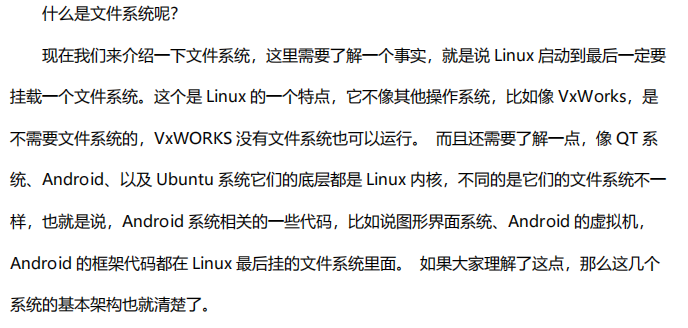
Linux 内核和文件系统之间,什么关系?
答案:文件系统是操作系统用于明确存储设备(常见的是磁盘,也有基于NAND Flash的固态硬盘)或分区上的文件的方法和数据结构;即在存储设备上组织文件的方法。操作系统中负责管理和存储文件信息的软件机构称为文件管理系统,简称文件系统。
注意:
1.Linux必须要挂接一个文件系统
2.Linux启动到最后,等所以驱动初始化完成以后,最后一步才挂载文件系统
Linux系统编程

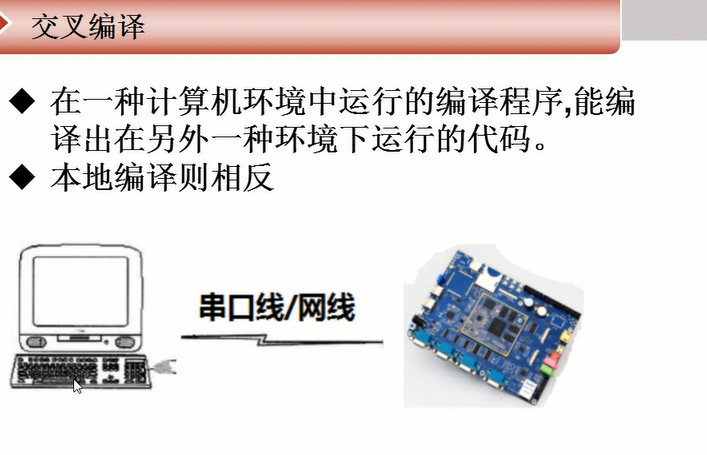

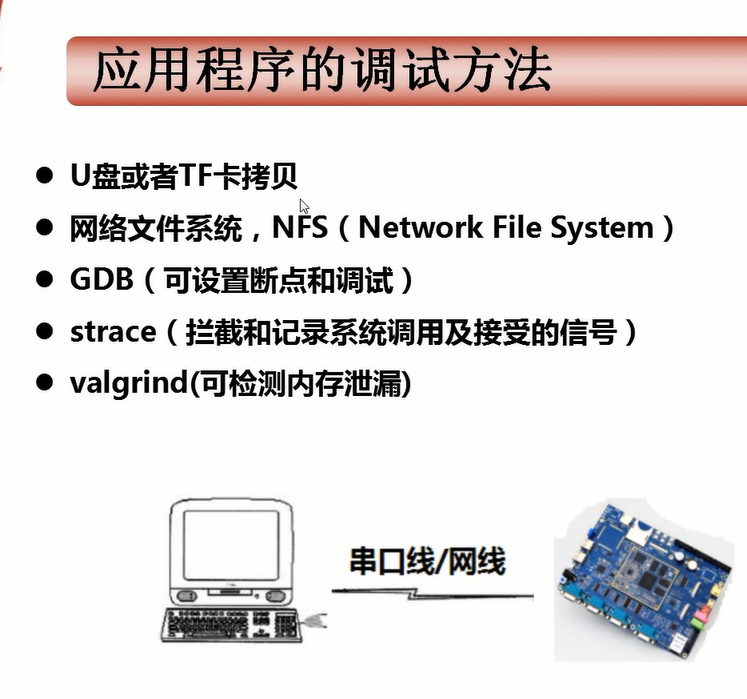

su/su root 进入超级用户
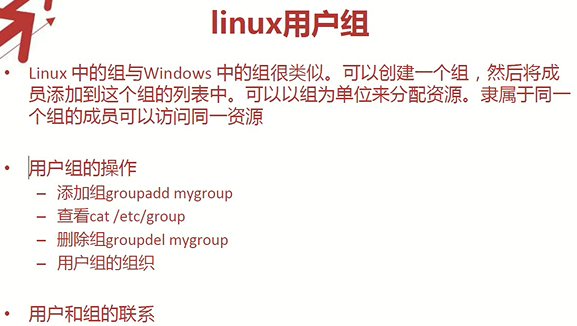


ls -il显示文件节点和详细信息 ls -a 显示隐藏文件 ls -i 显示文件节点
pwd 显示当前路径 ls -R 显示其子目录 ls -d 显示其目录名称
mkdir -p 建立文件夹及其上一级文件夹 mkdir -v 建立文件夹显示详细信息
touch 创建文件 cd … 回到上一级 cd /进入根目录 cd ~ 进入操作者主目录
mv 移动文件 cp -r 复制文件夹及其文件 cp -i 覆盖文件前询问用户
rm -rf 强制删除文件夹 rm 删除文件
ln 文件1 文件2 硬链接 ln -s 文件1 文件2 软链接
硬连接的优点是不同目录通过不同路径访问同一文件,节约磁盘空间,又便于数据一致性。
缺点是不能连接目录,不能跨越不同文件系统。
adduser 用户名 只需配置密码就行 useradd 用户名 配置密码和文件等等
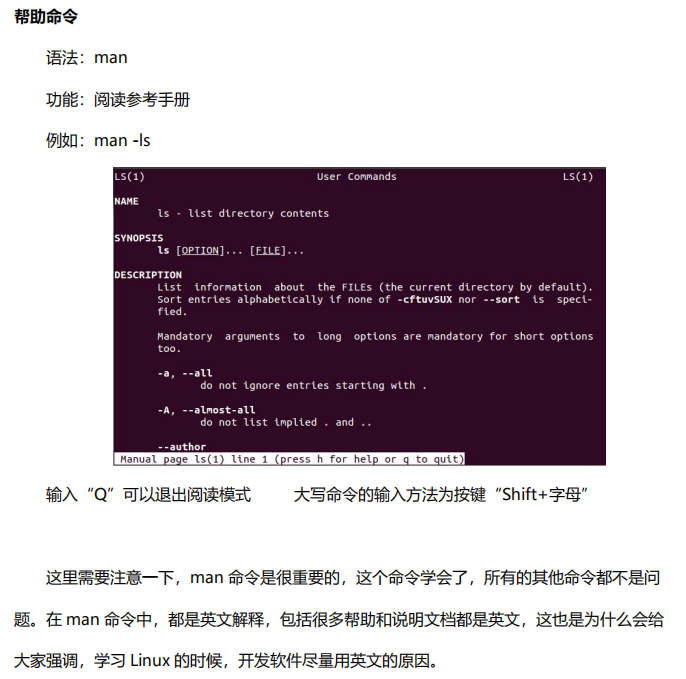
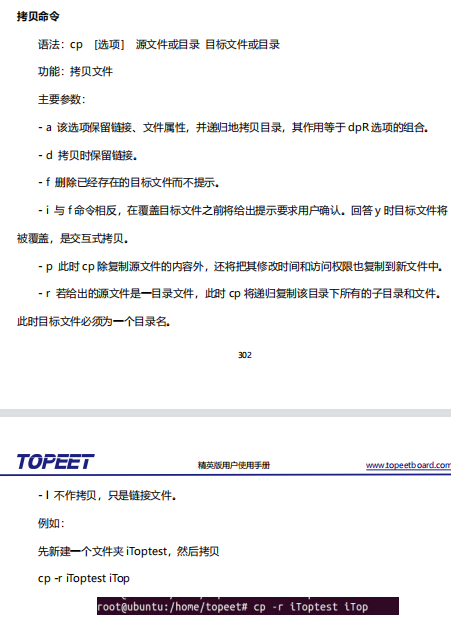

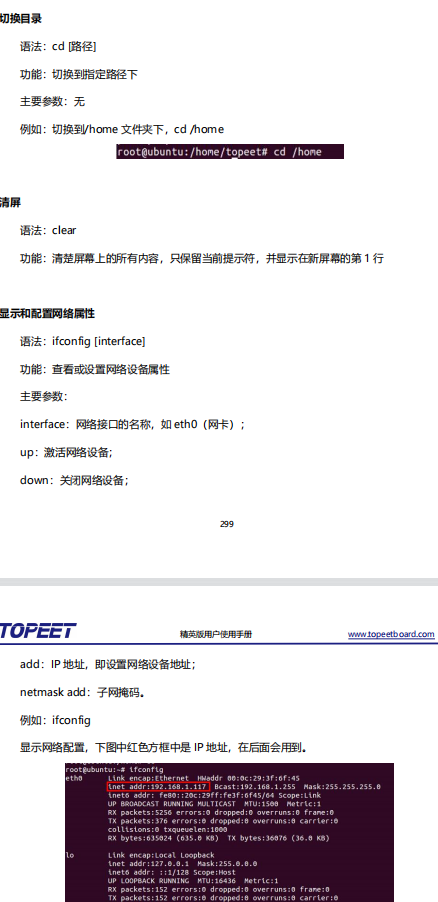
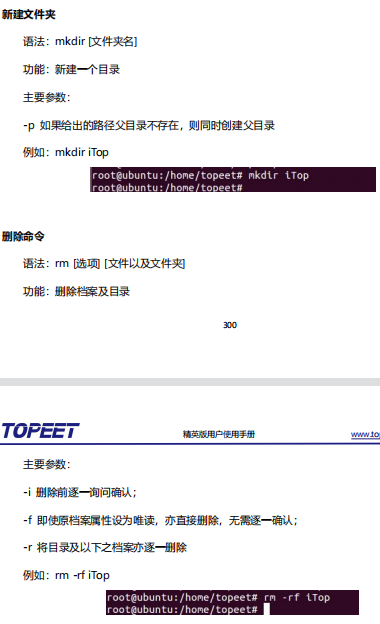
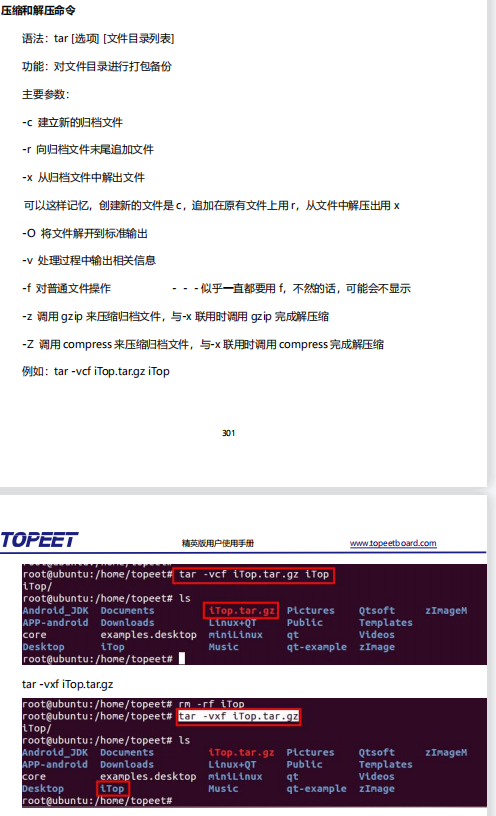
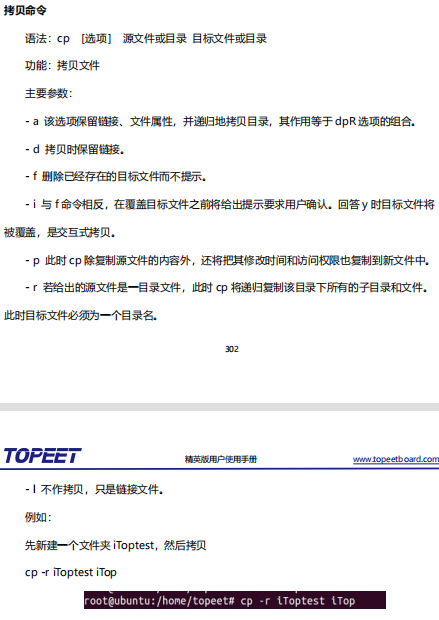

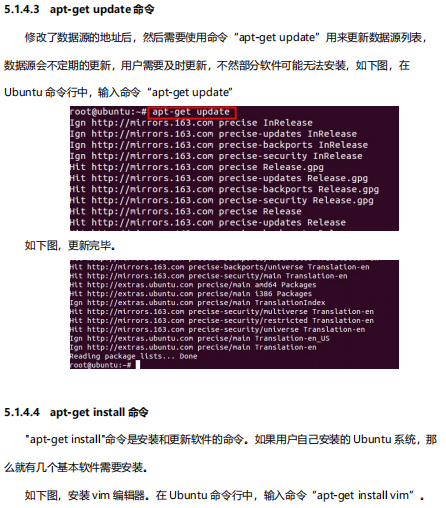

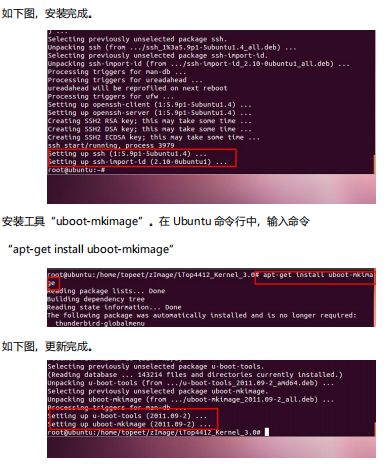
文件IO函数之open函数


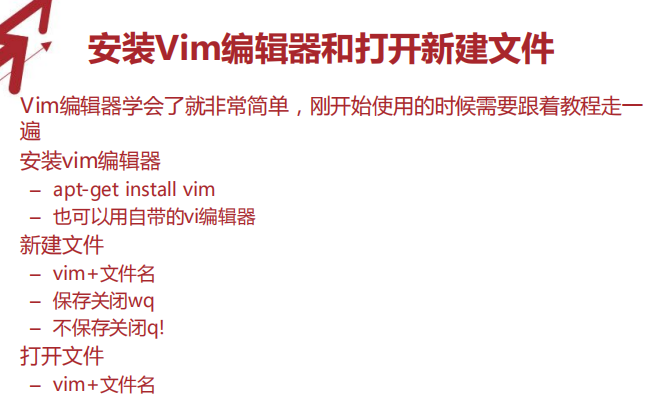
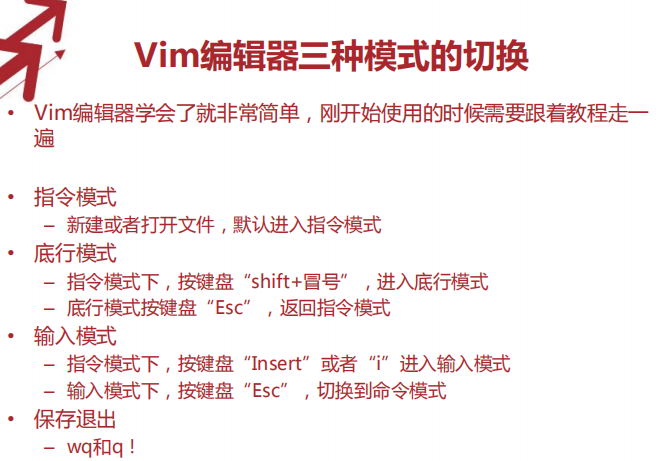
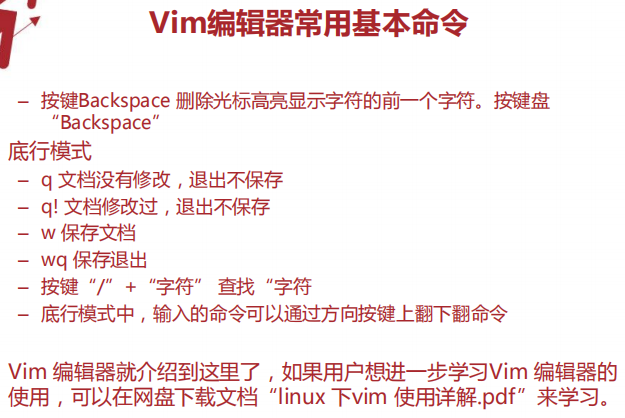


实战字符设备控制**
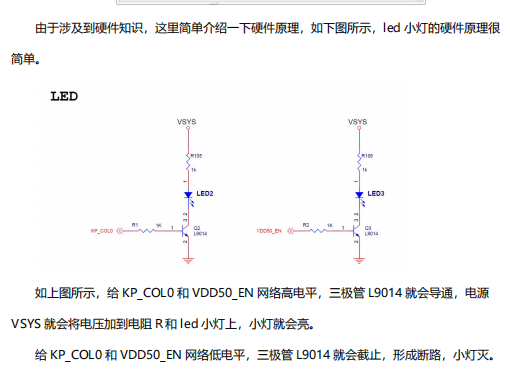
点灯大师测试例程
#include <stdio.h>
#include <sys/types.h>
#include <sys/stat.h>
#include <fcntl.h>
#include <unistd.h>
#include <string.h>
#define LED_NUM 2
#define LED_C 2
//cmd为0,则灭;为1,则亮
//io为0则是靠近蜂鸣器,为1,则靠近独立按键的小灯
int main(int argc,char *argv[])
{
int fd,led_num,led_c;
char *leds ="/dev/leds";
led_c=LED_C;
led_num =LED_NUM;
printf("argv1 is cmd;argv2 is io\n");
if(atoi(argv[1])>=led_c)
{
printf("argv[1] is 0 or 1\n");
exit(1);
}
if(atoi(argv[2])>=led_c)
{
printf("argv[2] is 0 or 1\n");
exit(1);
}
if((fd=open(leds,O_RDWR|O_NOCTTY|O_NDELAY))<0)
{
printf("open %s failed\n",leds);
}
else
{
ioctl(fd,atoi(argv[1]),atoi(argv[2]));
printf("ioctl %s success\n",leds);
}
close(fd);
return 0;
}
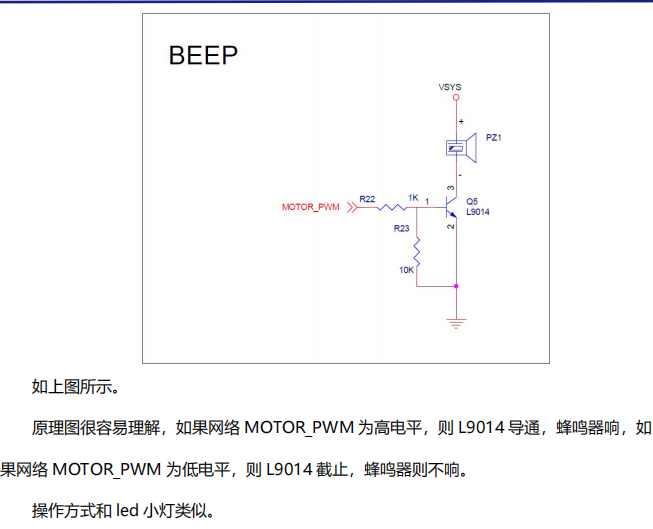
蜂鸣器测试例程
#include <stdio.h>
#include <stdlib.h>
#include <string.h>
#include <sys/types.h>
#include <sys/stat.h>
#include <fcntl.h>
#include <unistd.h>
#include <termios.h>
#include <string.h>
#define BUZZER_C 2
int main(int argc,char *argv[])
{
char *buzzer_ctl ="/dev/buzzer_ctl";
int fd,ret,buzzer_c;
buzzer_c =BUZZER_C;
if(atoi(argv[1]) >=buzzer_c )
{
printf("argv[1] is 0 or 1\n");
exit(1);
}
if((fd = open (buzzer_ctl,O_RDWR|O_NOCTTY|O_NDELAY))<0)
{
printf("open %s failed\n",buzzer_ctl);
exit(1);
}
ret =ioctl(fd,atoi(argv[1]),atoi(argv[2]));
close(fd);
return 0;
}

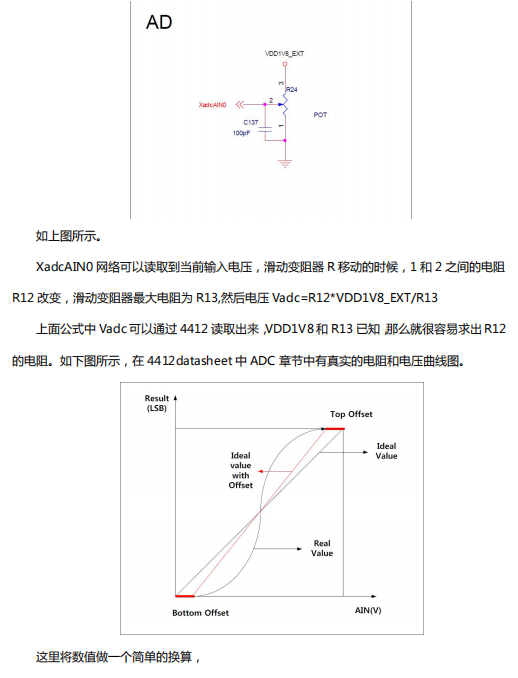
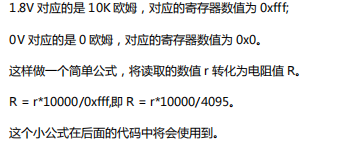
串口通信(重要掌握)
几个关于串口的基本概念
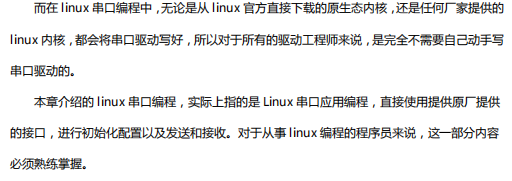
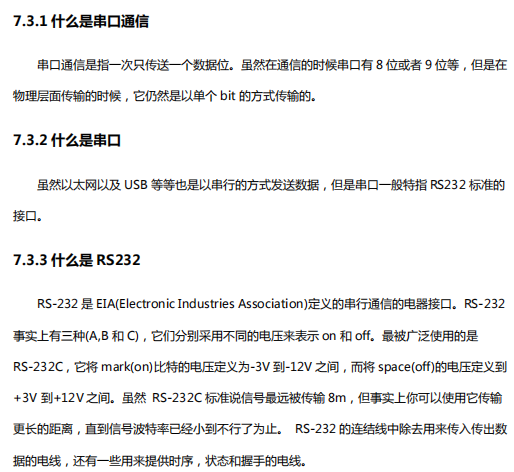

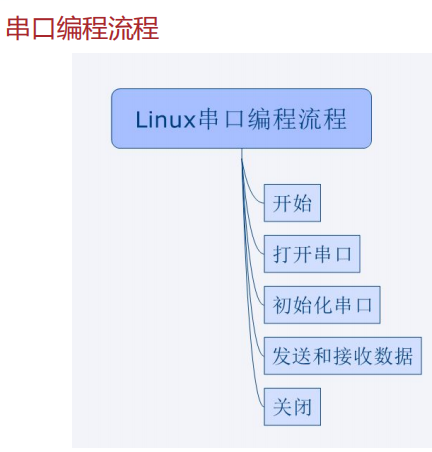
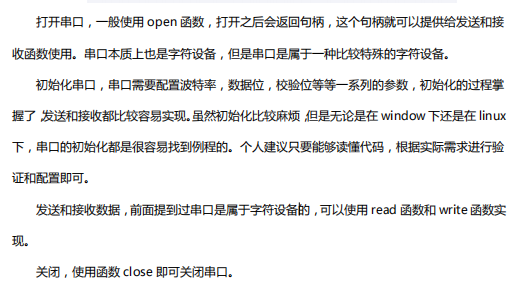
串口编程之开机自启动测试程序
• 开机启动运行程序
• 通过设置将helloworld程序开机运行
• 实验操作
1、cp -r 测试程序文件路径 /bin
2、 vi /etc/init.d/rcS

shift+g 调到最后一行添加 /bin/hello &

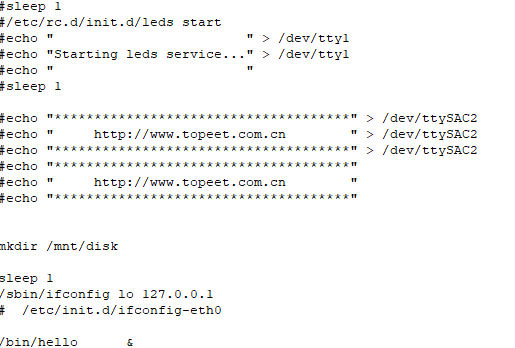
ESC 然后shift+;输入wq保存该文件
在超级终端菜单栏的控制选择日志设置
选择Log type 为Standard ,点击…保存日志在电脑自己指定位置
点击日志文件Ctrl+f 查找测试程序打印结果
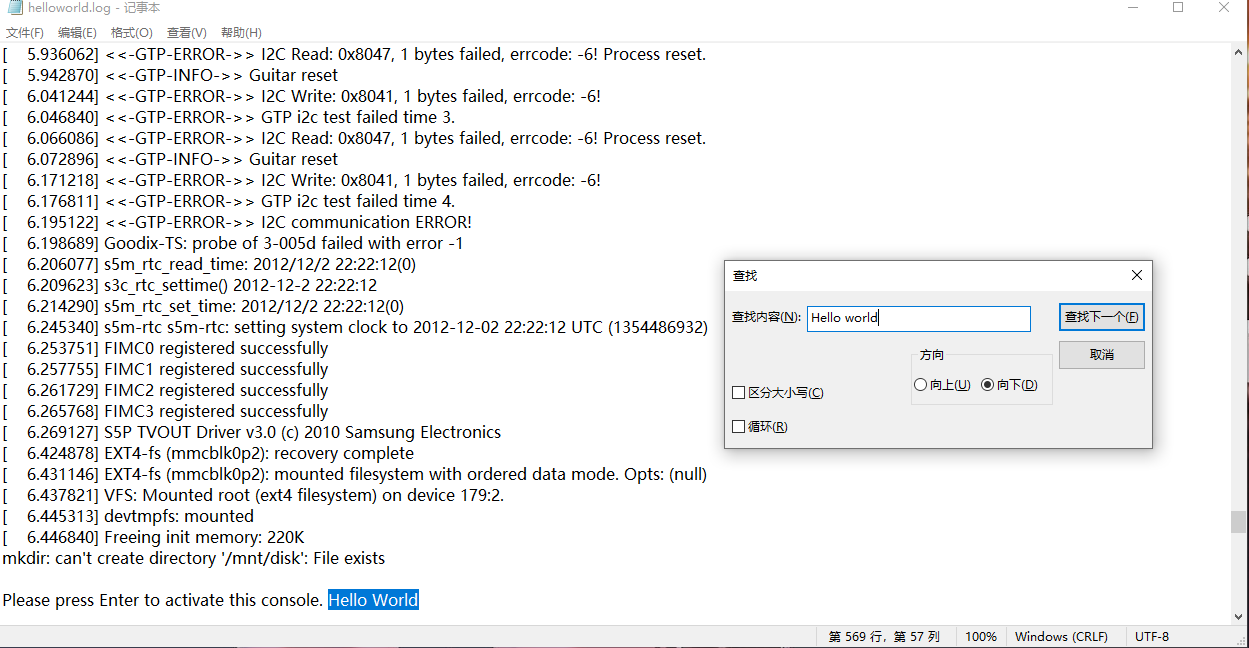
3、输入reboot重启开发板


串口编程之打开串口

测试例程
#include <stdio.h>
#include <sys/types.h>
#include <sys/stat.h>
#include <fcntl.h>
#include <unistd.h>
#include <string.h>
void main()
{
int fd;
char *uart3="/bin/ttySAC3";
if((fd=open(uart3,O_RDWR|O_CREAT,0777))<0)
{
printf("open %s failed\n",uart3);
}
else
{
printf("open %s is success!\n",uart3);
}
close(fd);
}
串口初始化
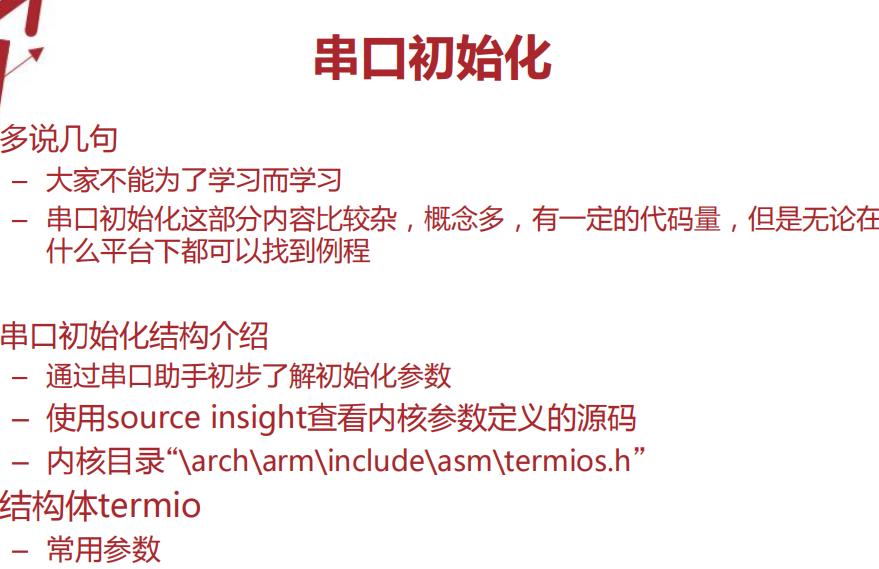

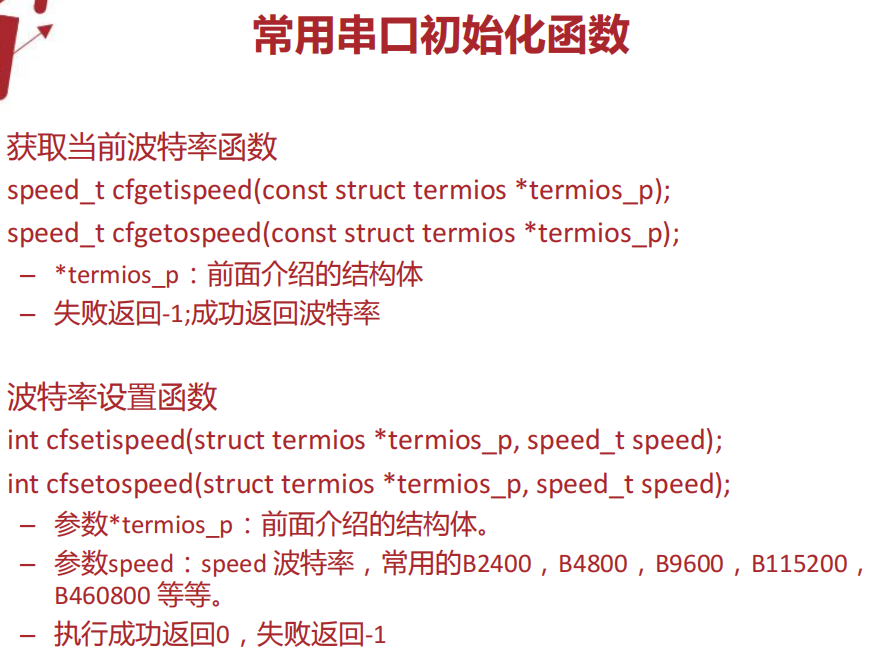
测试代码
#include <stdio.h>
#include <sys/types.h>
#include <sys/stat.h>
#include <fcntl.h>
#include <unistd.h>
#include <string.h>
int set_opt(int,int,int,char,int);
void main(void)
{
int fd,wr_static,i=10;
char *uart3="/dev/ttySAC3";
char *buffer="hello world!\n";
printf("\r\nitop4412 uart3 writetest start\r\n");
if((fd = open(uart3,O_RDWR|O_NOCTTY|O_NDELAY))<0)
{
printf("open %s is failed",uart3);
}
else
{
printf("open %s is success\n",uart3);
set_opt(fd,115200,8,'N',1);
while(i--)
{
wr_static =write(fd,buffer,strlen(buffer));
if(wr_static<0)
printf("write failed\n");
else
{
printf("wr_static is %d\n",wr_static);
}
sleep(1);
}
}
}
//标识符 波特率 数据位 奇偶效验位 停止位
int set_opt(int fd,int nSpeed,int nBits,char nEvent,int nStop)
{
struct termios newtio,oldtio;
if(tcgetattr(fd,&oldtio) != 0)
{
perror ("SetupSerial 1");
return -1;
}
bzero(&newtio,sizeof(newtio));
newtio.c_cflag |=CLOCAL |CREAD; //控制模式
newtio.c_cflag &=~CSIZE;
switch(nBits)
{
case 7: newtio.c_cflag |=CS7;break;
case 8: newtio.c_cflag |=CS8;break;
}
switch(nEvent)
{
case 'O':
newtio.c_cflag |=PARENB;
newtio.c_cflag |=PARODD;
newtio.c_iflag |=(INPCK | ISTRIP);
break;
case 'E':
newtio.c_cflag |=PARENB;
newtio.c_cflag &=~PARODD;
newtio.c_iflag |=(INPCK | ISTRIP);
break;
case 'N':
newtio.c_cflag &=~PARENB;
break;
}
switch(nSpeed)
{
case 2400:
cfsetispeed(&newtio,B2400);
cfsetispeed(&newtio,B2400);
break;
case 4800:
cfsetispeed(&newtio,B4800);
cfsetispeed(&newtio,B4800);
break;
case 9600:
cfsetispeed(&newtio,B9600);
cfsetispeed(&newtio,B9600);
break;
case 115200:
cfsetispeed(&newtio,B115200);
cfsetispeed(&newtio,B115200);
break;
case 460800:
cfsetispeed(&newtio,B460800);
cfsetispeed(&newtio,B460800);
break;
default:
cfsetispeed(&newtio,B9600);
cfsetispeed(&newtio,B9600);
break;
}
if(nSTOP ==1)
{
newtio.c_cflag &=~CSTOPB;
}
else if(nSTOP ==2)
{
newtio.c_cflag |=~CSTOPB;
newtio.c_cc[VTIME]=0;
newtio.c_cc[VMIN]=0;
tcflush(fd,TCIFLUSH);//清空数据函数
if((tcsetattr(fd,TCSANOW,&newtio))!=0)//不等数据传输完毕立即改变属性
{
perror("com set error");
return -1;
}
return 0;
}
}
串口编程之使用串口发送数据

测试代码
#include <stdio.h>
#include <sys/types.h>
#include <sys/stat.h>
#include <unistd.h>
#include <fcntl.h>
#include <termios.h>
#include <errno.h>
#include <string.h>
int set_opt(int,int,int,char,int);
void main()
{
int fd,i=10,wr_static;
char *uart3="/dev/ttySAC3"; //选择的串口
char *buffer="hello world!\n";//发送的数据
printf("\r\nitop4412 uart3 writetest start\r\n");
if((fd=open(uart3,O_RDWR|O_CREAT,0777))<0)
{
printf("open %s failed!\n",uart3);
}
else
{
printf("open %s is success!\n",uart3);
set_opt(fd,115200,8,'N',1);
while(i--)
{
wr_static =write(fd,buffer,strlen(buffer));
if(wr_static<0)
{
printf("write failed\n");
}
else
{
printf("wr_static is %d\n",wr_static);
}
sleep(1);
}
}
}
int set_opt(int fd,int nSpeed,int nBits,char nEvent,int nStop)
{
struct termios newtio,oldtio;
if(tcgetattr(fd,&oldtio) != 0)
{
perror ("SetupSerial 1");
return -1;
}
bzero(&newtio,sizeof(newtio));
newtio.c_cflag |=CLOCAL |CREAD; //控制模式
newtio.c_cflag &=~CSIZE;
switch(nBits)
{
case 7: newtio.c_cflag |=CS7;break;
case 8: newtio.c_cflag |=CS8;break;
}
switch(nEvent)
{
case 'O':
newtio.c_cflag |=PARENB;
newtio.c_cflag |=PARODD;
newtio.c_iflag |=(INPCK | ISTRIP);
break;
case 'E':
newtio.c_cflag |=PARENB;
newtio.c_cflag &=~PARODD;
newtio.c_iflag |=(INPCK | ISTRIP);
break;
case 'N':
newtio.c_cflag &=~PARENB;
break;
}
switch(nSpeed)
{
case 2400:
cfsetispeed(&newtio,B2400);
cfsetispeed(&newtio,B2400);
break;
case 4800:
cfsetispeed(&newtio,B4800);
cfsetispeed(&newtio,B4800);
break;
case 9600:
cfsetispeed(&newtio,B9600);
cfsetispeed(&newtio,B9600);
break;
case 115200:
cfsetispeed(&newtio,B115200);
cfsetispeed(&newtio,B115200);
break;
case 460800:
cfsetispeed(&newtio,B460800);
cfsetispeed(&newtio,B460800);
break;
default:
cfsetispeed(&newtio,B9600);
cfsetispeed(&newtio,B9600);
break;
}
if(nStop ==1)
{
newtio.c_cflag &=~CSTOPB;
}
else if(nStop ==2)
{
newtio.c_cflag |=~CSTOPB;
newtio.c_cc[VTIME]=0;
newtio.c_cc[VMIN]=0;
tcflush(fd,TCIFLUSH);//清空数据函数
if((tcsetattr(fd,TCSANOW,&newtio))!=0)//不等数据传输完毕立即改变属性
{
perror("com set error");
return -1;
}
return 0;
}
}
实验效果
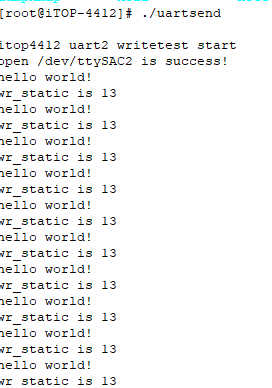
串口编程之使用串口接收数据

测试代码
#include <stdio.h>
#include <string.h>
#include <unistd.h>
#include <sys/types.h>
#include <sys/stat.h>
#include <fcntl.h>
#include <termios.h>
#include <errno.h>
int set_opt(int,int,int,char,int);
//"/dev/ttySAC3"是con2,靠近耳机接口的串口
void main()
{
int fd,nByte;
char *uart3 = "/dev/ttySAC3";
char buffer[512];
char *uart_out = "please input\r\n";
memset(buffer, 0, sizeof(buffer));
if((fd = open(uart3, O_RDWR|O_NOCTTY))<0)
printf("open %s is failed",uart3);
else{
set_opt(fd, 115200, 8, 'N', 1);
write(fd,uart_out, strlen(uart_out));
while(1){
while((nByte = read(fd, buffer, 512))>0){
buffer[nByte+1] = '\0';
write(fd,buffer,strlen(buffer));
memset(buffer, 0, strlen(buffer));
nByte = 0;
}
}
}
}
int set_opt(int fd,int nSpeed, int nBits, char nEvent, int nStop)
{
struct termios newtio,oldtio;
if ( tcgetattr( fd,&oldtio) != 0) {
perror("SetupSerial 1");
return -1;
}
bzero( &newtio, sizeof( newtio ) );
newtio.c_cflag |= CLOCAL | CREAD;
newtio.c_cflag &= ~CSIZE;
switch( nBits )
{
case 7:
newtio.c_cflag |= CS7;
break;
case 8:
newtio.c_cflag |= CS8;
break;
}
switch( nEvent )
{
case 'O':
newtio.c_cflag |= PARENB;
newtio.c_cflag |= PARODD;
newtio.c_iflag |= (INPCK | ISTRIP);
break;
case 'E':
newtio.c_iflag |= (INPCK | ISTRIP);
newtio.c_cflag |= PARENB;
newtio.c_cflag &= ~PARODD;
break;
case 'N':
newtio.c_cflag &= ~PARENB;
break;
}
switch( nSpeed )
{
case 2400:
cfsetispeed(&newtio, B2400);
cfsetospeed(&newtio, B2400);
break;
case 4800:
cfsetispeed(&newtio, B4800);
cfsetospeed(&newtio, B4800);
break;
case 9600:
cfsetispeed(&newtio, B9600);
cfsetospeed(&newtio, B9600);
break;
case 115200:
cfsetispeed(&newtio, B115200);
cfsetospeed(&newtio, B115200);
break;
case 460800:
cfsetispeed(&newtio, B460800);
cfsetospeed(&newtio, B460800);
break;
default:
cfsetispeed(&newtio, B9600);
cfsetospeed(&newtio, B9600);
break;
}
if( nStop == 1 )
newtio.c_cflag &= ~CSTOPB;
else if ( nStop == 2 )
newtio.c_cflag |= CSTOPB;
newtio.c_cc[VTIME] = 0;
newtio.c_cc[VMIN] = 0;
tcflush(fd,TCIFLUSH);
if((tcsetattr(fd,TCSANOW,&newtio))!=0)
{
perror("com set error");
return -1;
}
// printf("set done!\n\r");
return 0;
}
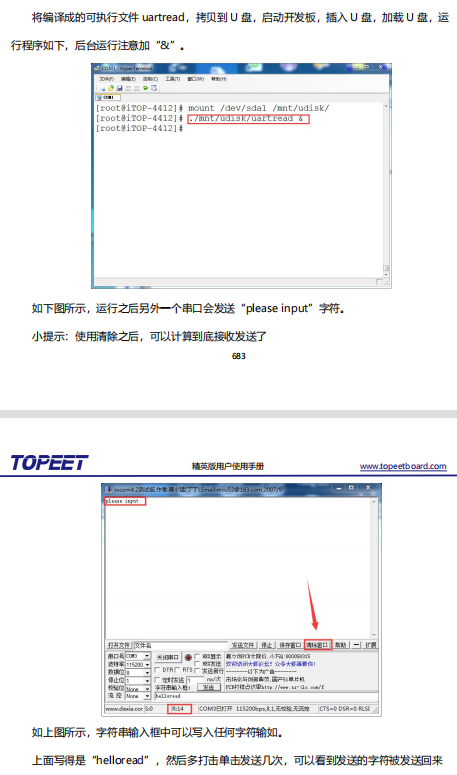
TFTP服务器搭建
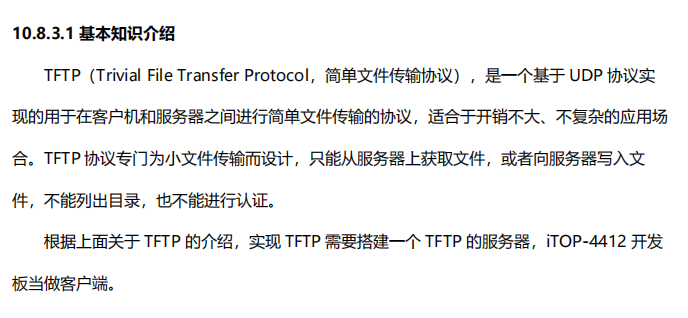
搭建服务器
首先输入命令“sudo apt-get install xinetd”,安装 xinetd。
接下来输入命令“sudo apt-get install tftp tftpd”安装 tftp 和 tftpd,
然后建立 TFTP 的配置文件,使用命令“vi /etc/xinetd.d/tftp”建立文件,
写入下面的内容:
service tftp
{
socket_type = dgram
protocol = udp
wait = yes
user = root
server = /usr/sbin/in.tftpd
server_args = -s /var/tftpboot/
disable = no
per_source = 11
cps = 100 2
flags = IPv4
}
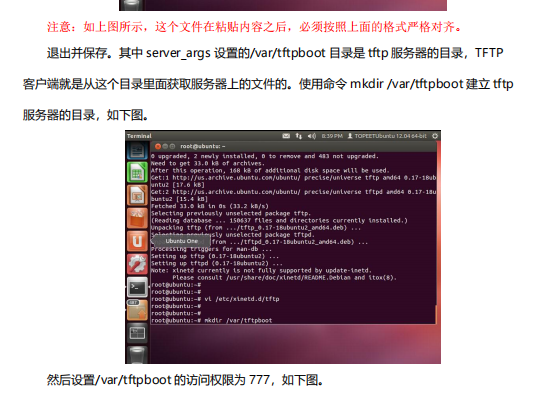
sudo /etc/init.d/xinetd restart 命令重启 xinetd 服务
服务器到这一步就搭建好了,后面来进行测试。
服务器测试
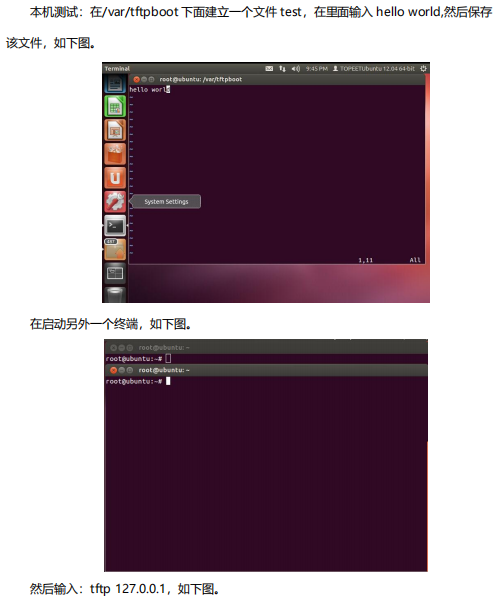
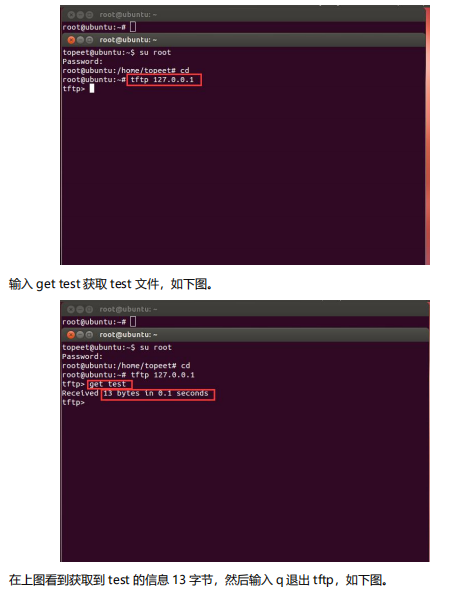

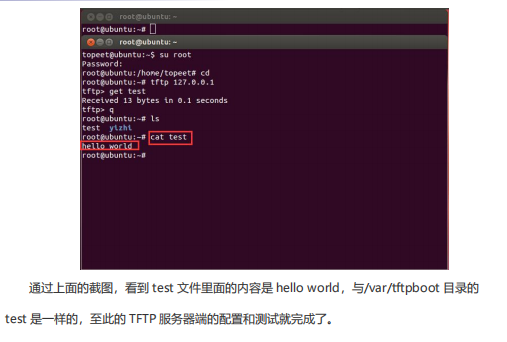
后面一个终端是客户端,前面那个是服务器端。
开发板实现 TFTP 文件传输
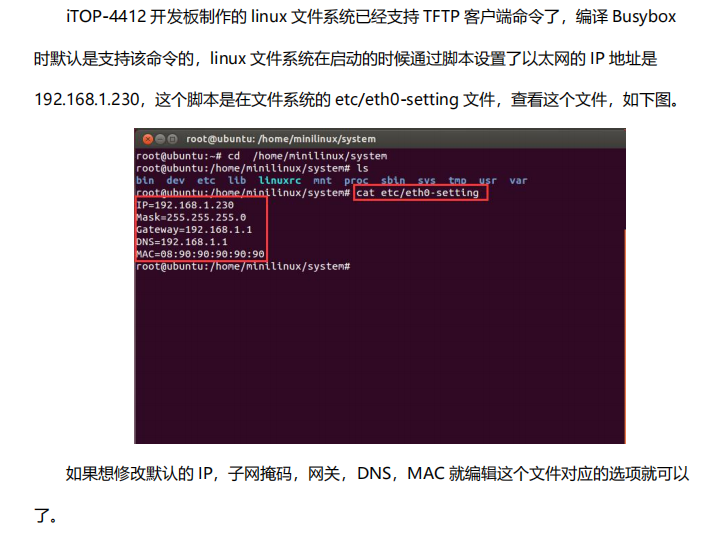
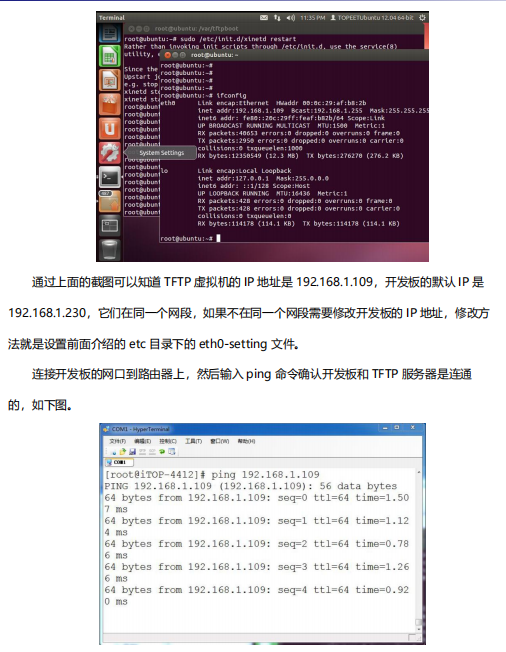
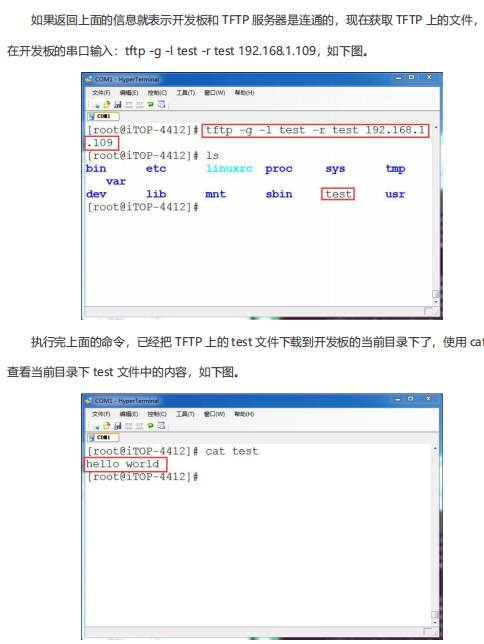




















 389
389











 被折叠的 条评论
为什么被折叠?
被折叠的 条评论
为什么被折叠?








